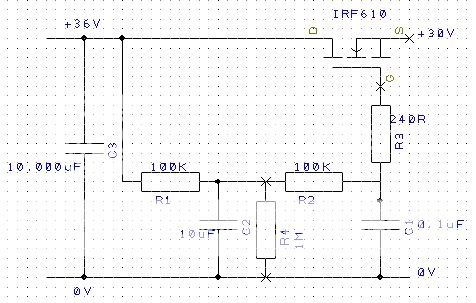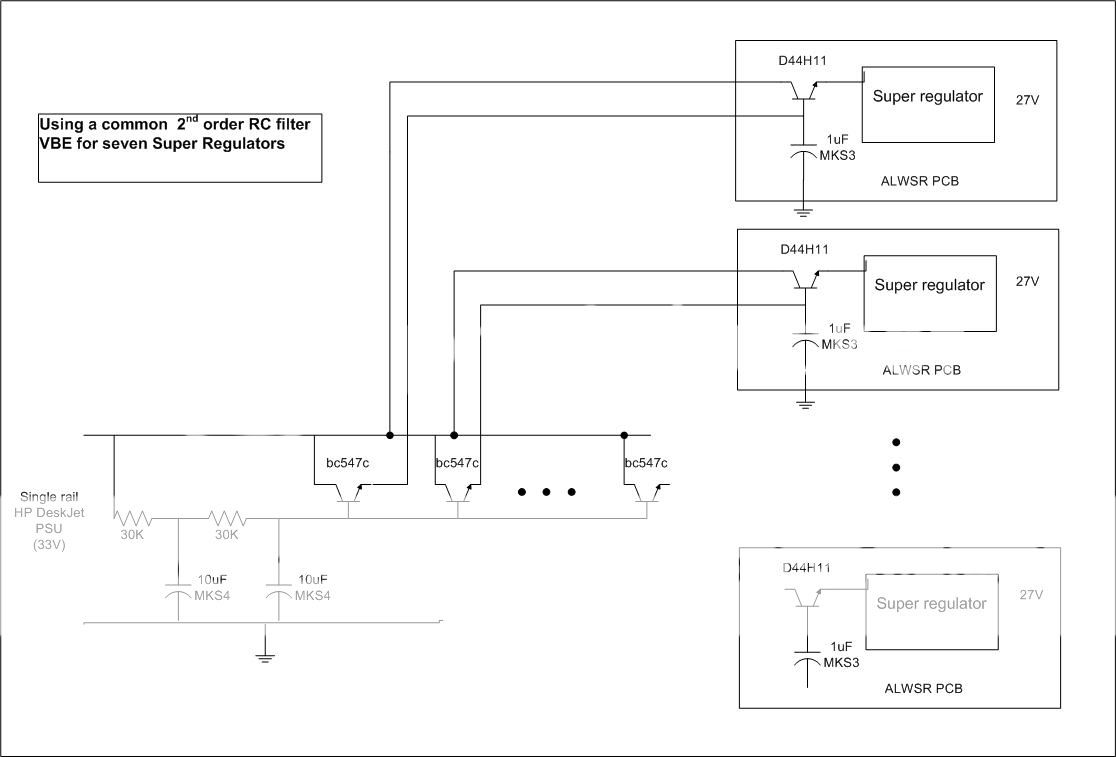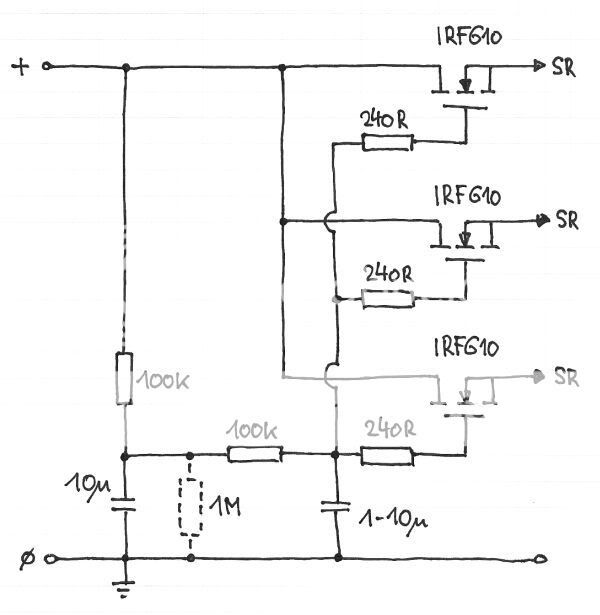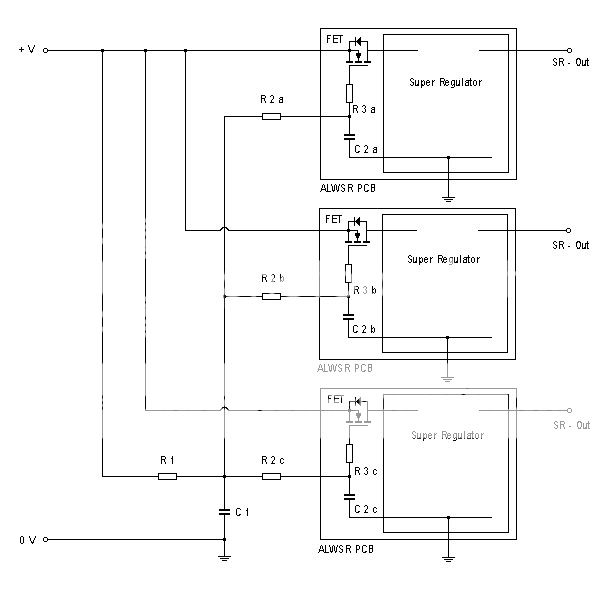Over the last couple of days, I rebuilt the PSU for my cd3.5 (I'll start a seperate thread), but the salient point here is the fet-based vbe that I built for the analog stage.
The cd3.5 is pretty maxed out and has 2 ALWSRs powering the analog stage (opa627 op amps) @ 18.4V. Until now, the SRs were standard lm1086 pre-reg affairs. The PSU had a seperate 25-0-25 twin-secondary IE core trafo / mbr20200ct rectifiers / 10000 kendeil, lm1086 pre-pre-reg @ 26V. This was fed into the cd3.5 and thereby into the SRs.
Now I've changed it... the PSU's analog rails are the same 25-0-25 trafo/rectifiers/kendeils but then I've got this little arrangement:
C3 is the smoothing Kendeil
C2 is a 10uF Wima MKS4-LN metallised polyester film cap
C1 is a .1uF generic metallised polyester film cap (anyone got some .1uF polystyrenes or polypropylenes...? I'm after 6 in total)
Input voltage to the circuit is around 36V and output is 30V. It's carefully laid out on circuit board and hooked up with heavy guage silver/ptfe cabling inside the psu. Inside the cd3.5, I've removed the lm1086s from the SRs and bypassed the prereg section completely, but this means I'm dropping around 12V on the D44H8 on the SR and it got pretty hot! To counter that, I drilled the floor of the player and bolted the SRs directly to the chassis via sil-pads. That keeps them cool

Now, the sound... bearing in mind that part of the PSU rebuild added an extra trafo winding dedicated to powering the DAC (via another on-board flea... the cdp now has the standard naim trafo for digital, the IE core for analog, and a dual-secondary 0-18V for the clock [also via a flea] and the DAC) then this rearrangement of the analog PSU filtering is awesomely good.
Again, it's the basslines that get the real benefits... absolutely rock-solid, unwavering, fast deep notes that attack and decay with amazing precision. It makes the previous PSU sound positively wooly! Another benefit is in complex musical passages that I've never been entirely happy with before, where instruments could be seperated but somehow mushed together and lost coherence; now the soundstage remains open and the instruments remain distinct and voices maintain their presence.
In short, it's a wonderful upgrade and, thanks to PD and FDIECK, the IRF610s have remained nice and stable - no problems with oscillation now

I'm going to use this setup for the SRs inside my 62 now...
Happy hacker






